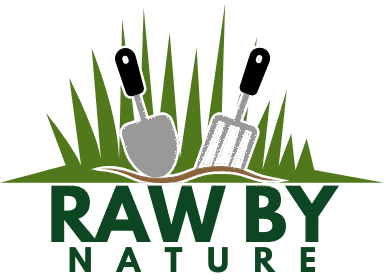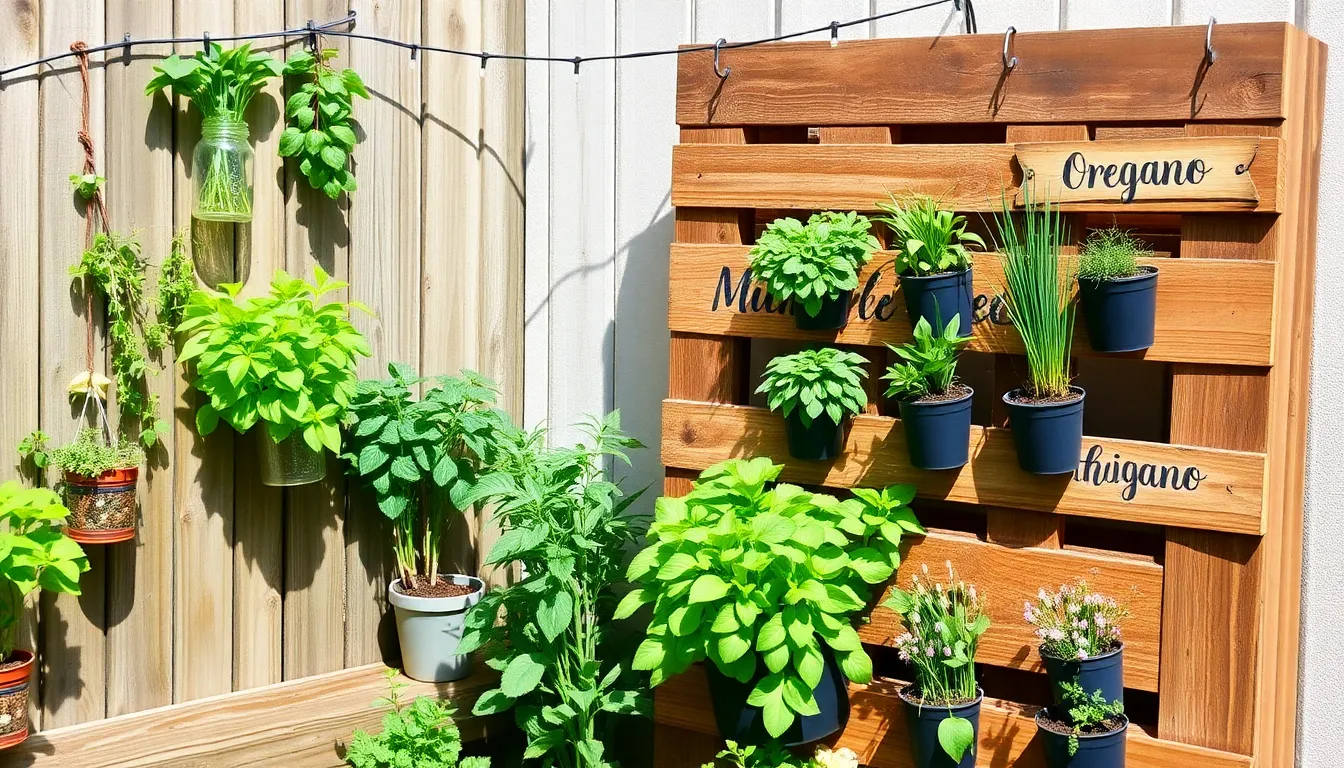Imagine stepping out into your garden and being greeted by the fragrance of fresh basil, mint, and rosemary, all thriving in a space you’ve lovingly crafted without breaking the bank. Whether you’re just starting your gardening journey or are a seasoned green thumb looking for fresh inspiration, “10 Budget-Friendly Herb Garden Ideas” is your ticket to a lush, aromatic retreat that enhances both your meals and your mood.
In this guide, you’ll discover creative ways to cultivate a vibrant herb garden that suits any space and budget, proving that you don’t need to splurge to succeed. With practical tips and innovative ideas, you’ll learn how to maximize your gardening potential while enjoying the therapeutic benefits and culinary rewards that come with growing your own herbs. Get ready to transform your gardening dreams into reality, one delightful herb at a time!
Repurpose Containers for Planting

Transform everyday items into unique planters to expand your herb garden without breaking the bank. Old tins, teapots, and even broken mugs can be repurposed into charming containers, adding character to your garden.
Make sure each container has proper drainage to prevent waterlogging, which is crucial for herbs. Drill a few holes in the bottom if necessary, and add a layer of pebbles or gravel before filling with soil.
When choosing soil, opt for a light, well-draining potting mix that will keep your herbs healthy. Herbs like rosemary and thyme prefer a sandy mix, while basil thrives in a more nutrient-rich medium.
For advanced gardeners, consider adding slow-release fertilizer to your potting mix to provide consistent nutrients to your herbs. This step is particularly beneficial for containers that will house vigorous growers like mint or parsley.
Grow Herbs from Kitchen Scraps

Growing herbs from kitchen scraps is a simple and cost-effective way to start or expand your garden. Not only does it reduce waste, but it also provides you with fresh herbs right from your windowsill or garden.
To begin, collect scraps from herbs like basil, cilantro, and mint, ensuring each has a stem attached. Place these stems in a glass of water, ensuring the leaves are above the water line to avoid rot.
Change the water every couple of days to keep it fresh and prevent bacterial growth. After a week or two, you should see roots developing, indicating they’re ready for planting in soil.
When transferring to soil, use well-draining potting mix to prevent waterlogging. Herbs prefer sunny spots, so place them in an area that receives at least six hours of direct sunlight daily.
Maintain consistent moisture by watering whenever the top inch of soil feels dry to the touch. For those looking to enhance growth, occasionally feed your herbs with a diluted liquid fertilizer.
Advanced gardeners can experiment with propagation techniques like taking cuttings at the node, which can increase the success rate. Keeping a journal of growth can help track which methods work best for each type of herb.
Utilize Vertical Space Efficiently
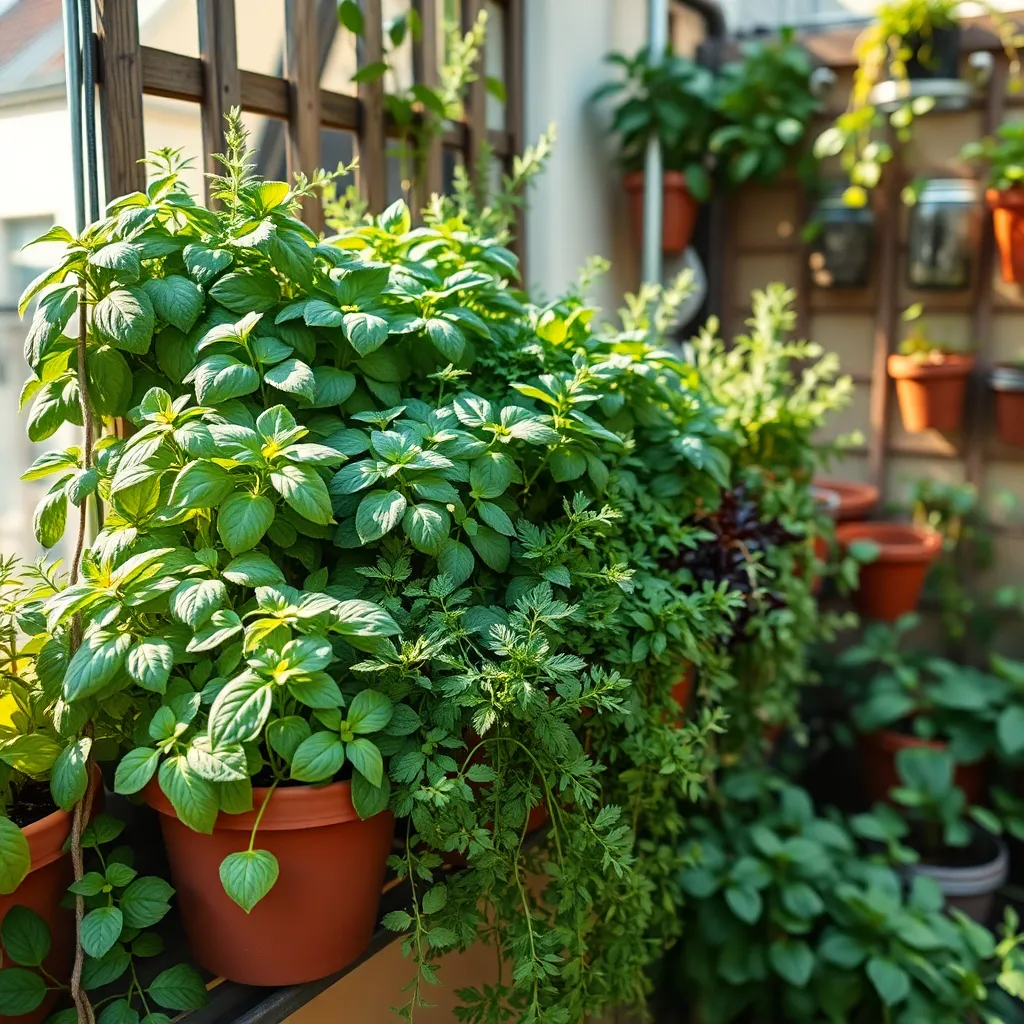
Maximizing vertical space in your herb garden is a practical way to grow more plants without needing additional ground area. Consider using a trellis or vertical planters, which can be made from affordable materials like wooden pallets or PVC pipes.
Hanging baskets are another excellent option for vertical gardening, allowing light and air to circulate around plants. Choose herbs that thrive in these conditions, such as thyme, oregano, and mint, which can cascade beautifully over the sides.
For beginners, start with simple projects like a vertical herb wall using small pots mounted on a wooden board. This setup not only saves space but also makes watering easier, as gravity helps distribute moisture evenly among the plants.
Advanced gardeners might experiment with hydroponic systems that utilize vertical space, providing optimal growing conditions for herbs like basil and cilantro. Ensure these systems have adequate sunlight and a balanced nutrient solution to promote healthy growth.
Start Seeds Indoors Early
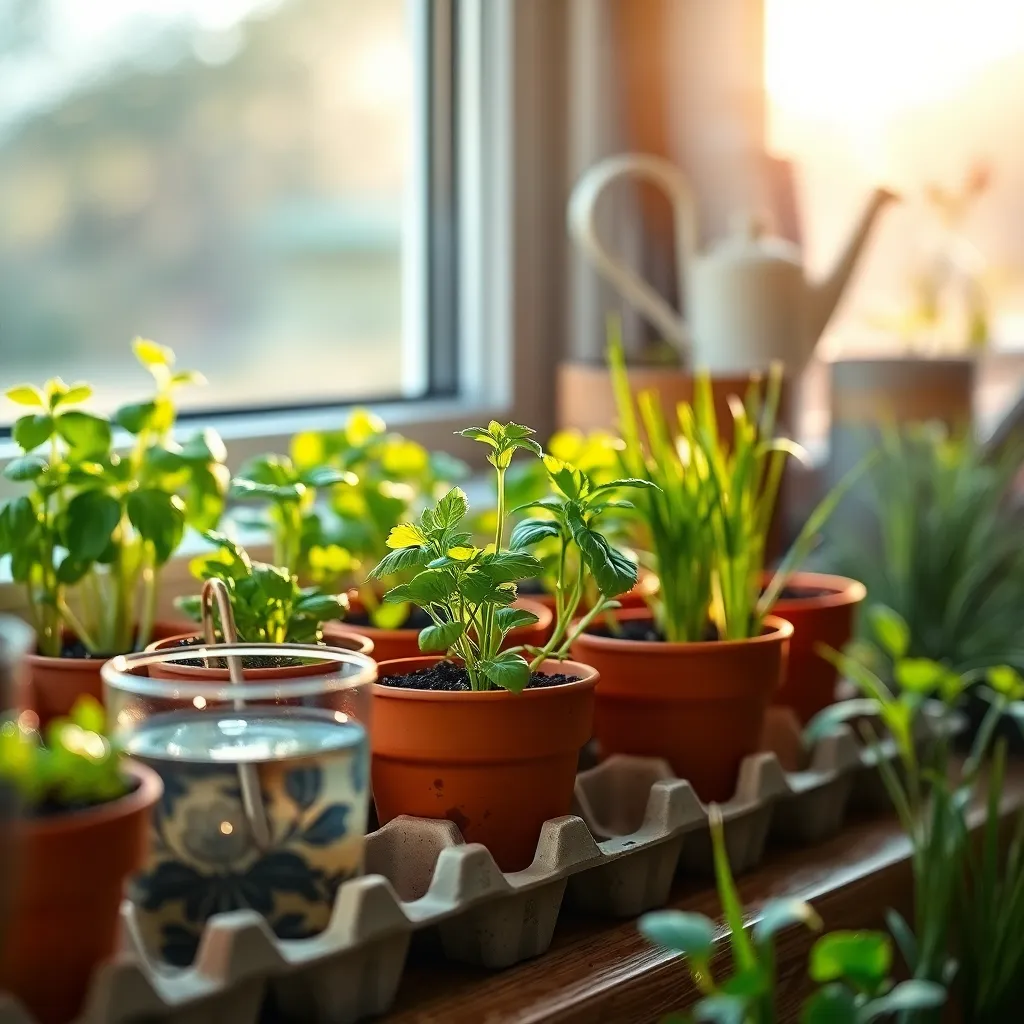
Starting seeds indoors early is a fantastic way to get a jump on the growing season. This technique allows you to control the environment, ensuring optimal conditions for germination and early growth.
To begin, gather seed trays or small pots, a quality seed-starting mix, and your chosen herb seeds. Use a sterile seed-starting mix to prevent diseases and ensure the best start for your seedlings.
Fill your containers with the seed-starting mix, leaving about a half-inch of space from the top. Moisten the mix slightly before planting your seeds to create a welcoming environment for germination.
Plant your seeds according to the depth recommended on the seed packet, generally twice the seed’s diameter. Place the trays in a warm spot, ideally between 65 and 75 degrees Fahrenheit, to encourage germination.
Once the seeds sprout, move them to a location with ample light, such as a sunny windowsill or under grow lights. Rotate the trays regularly to ensure even growth and prevent seedlings from becoming leggy.
Water seedlings carefully, keeping the soil consistently moist but not soggy. As they grow, consider thinning them to prevent overcrowding, which can lead to weak plants.
Before transplanting your herbs outdoors, harden them off by gradually exposing them to outdoor conditions over a week. This process strengthens the plants, making them more resilient once planted in the garden.
Create DIY Herb Markers
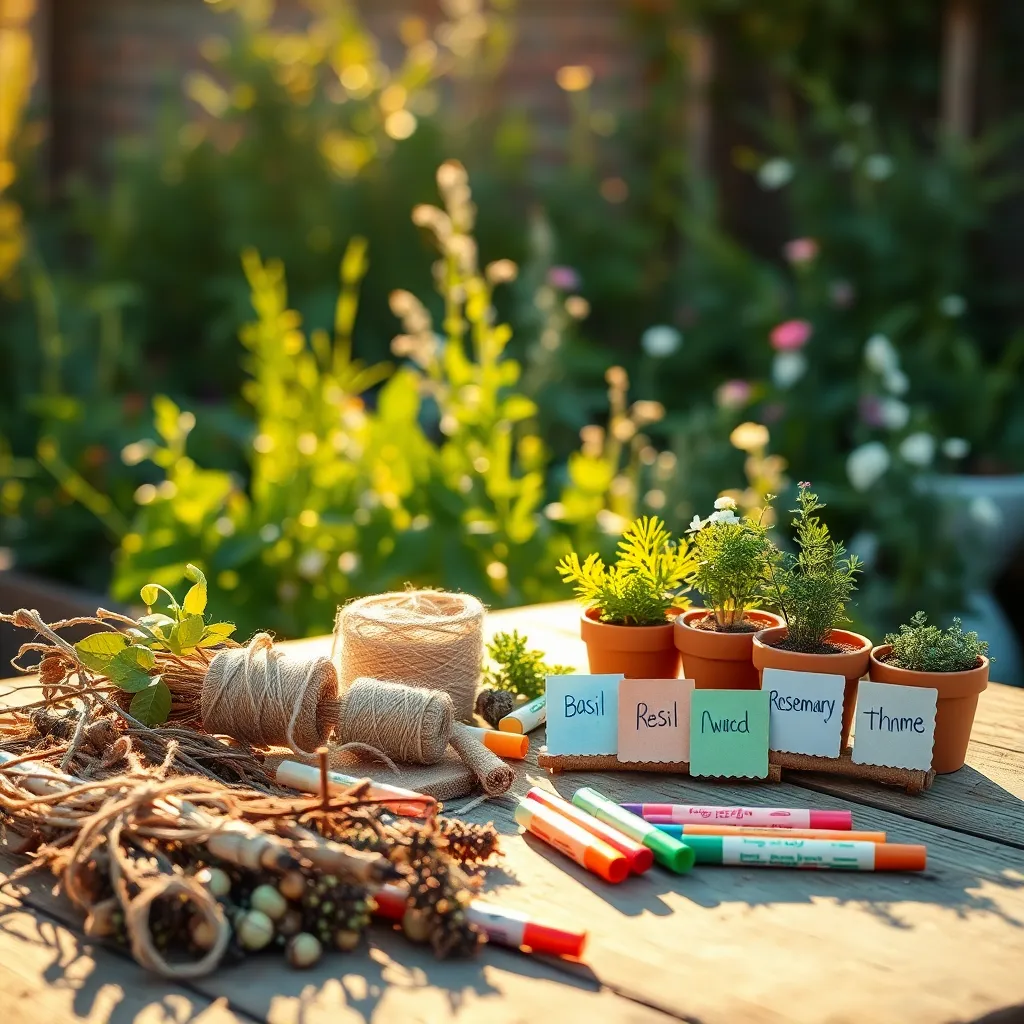
Creating DIY herb markers is a fun and practical way to personalize your garden. Using materials like stones, wooden spoons, or even broken pots, you can craft unique markers that will help you identify your herbs easily.
For a simple project, consider painting flat stones with acrylic paint, then use a sealant to protect them from the elements. Write the herb’s name with a permanent marker or paint pen, and place each stone at the base of your plants.
Wooden spoons also make excellent herb markers. Sand them lightly, paint them with weatherproof paint, and label each with the name of the herb using a fine-tipped brush or marker.
For a more advanced project, use old ceramic tiles or broken pottery pieces. Decorate them with mosaic designs or paint, then write the herb names with waterproof markers or ceramic paint for a long-lasting solution.
Use Companion Planting Techniques
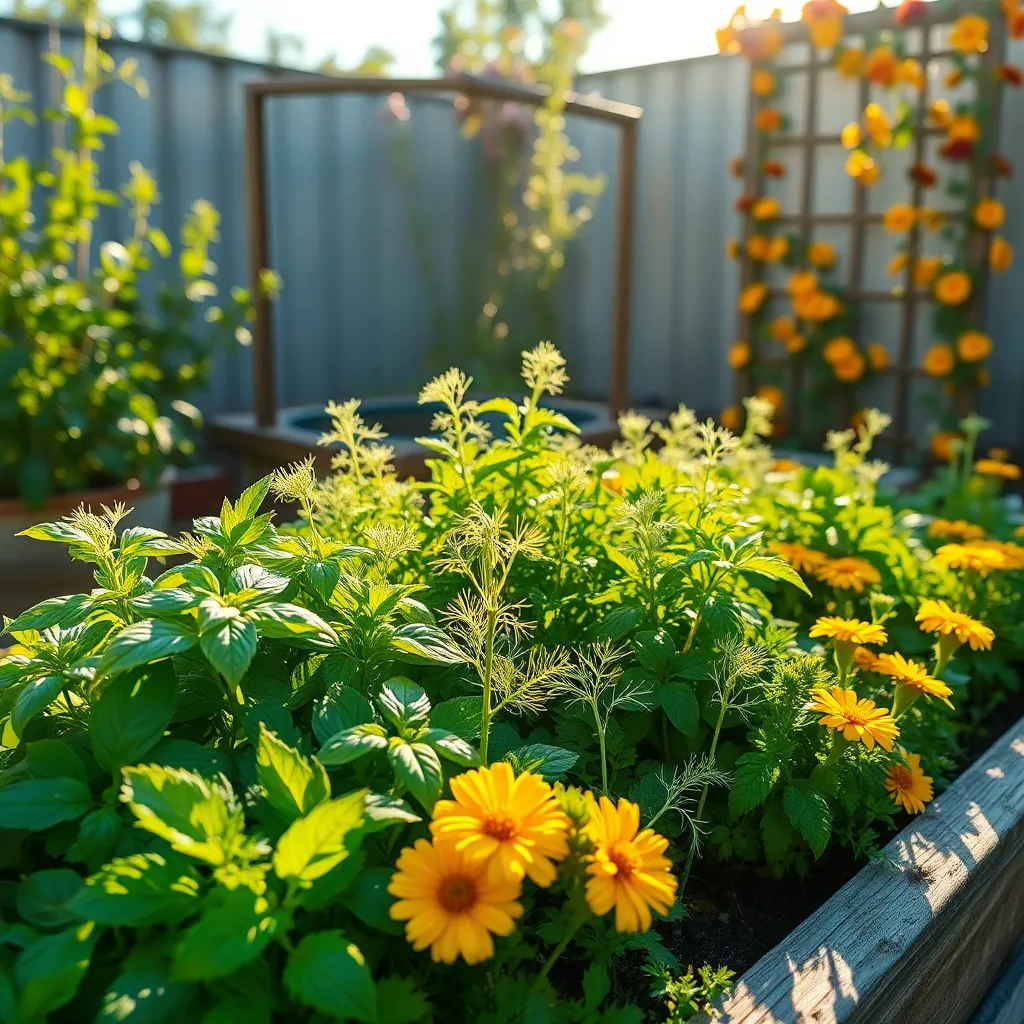
Companion planting is a fantastic way to enhance your herb garden’s health and productivity without additional cost. By strategically placing herbs that benefit each other side by side, you can optimize space and improve growing conditions naturally.
Start by pairing **basil with tomatoes** to repel pests like aphids and boost growth. Basil’s strong aroma not only deters unwanted insects but also enhances the flavor of tomatoes, making them a perfect pair.
Consider growing **chives alongside carrots** to improve the growth and flavor of both plants. Chives can help deter carrot flies, while their shallow roots won’t compete with the deeper-rooted carrots for nutrients.
For an advanced gardening technique, try using **marigolds as a companion plant** to herbs like mint and oregano to protect against nematodes. These vibrant flowers release substances in the soil that can deter these pests, ensuring healthier herb growth.
To maximize your herb garden’s potential, ensure the soil is well-draining and rich in organic matter, which supports the diverse needs of companion plants. Watering should be adjusted according to plant requirements, typically once a week, but more frequently during hot, dry spells.
Make Homemade Organic Fertilizer

Creating homemade organic fertilizer is an excellent way to nourish your herb garden while keeping costs low. Start by collecting kitchen scraps like fruit peels, coffee grounds, and eggshells, which are rich in nutrients that herbs love.
To make a balanced fertilizer, combine green materials such as grass clippings and brown materials like dried leaves in a compost bin. Ensure the compost is kept moist and turned regularly to speed up decomposition and nutrient availability.
Once fully decomposed, the compost can be mixed into the soil to improve its structure and fertility. This organic matter enhances the soil’s ability to retain moisture, reducing the need for frequent watering.
For a quick nutrient boost, you can also create a simple liquid fertilizer by steeping compost in water for a few days. Strain the mixture and use the nutrient-rich liquid to water your herbs every few weeks for optimal growth.
Harvest Herbs Regularly for Growth
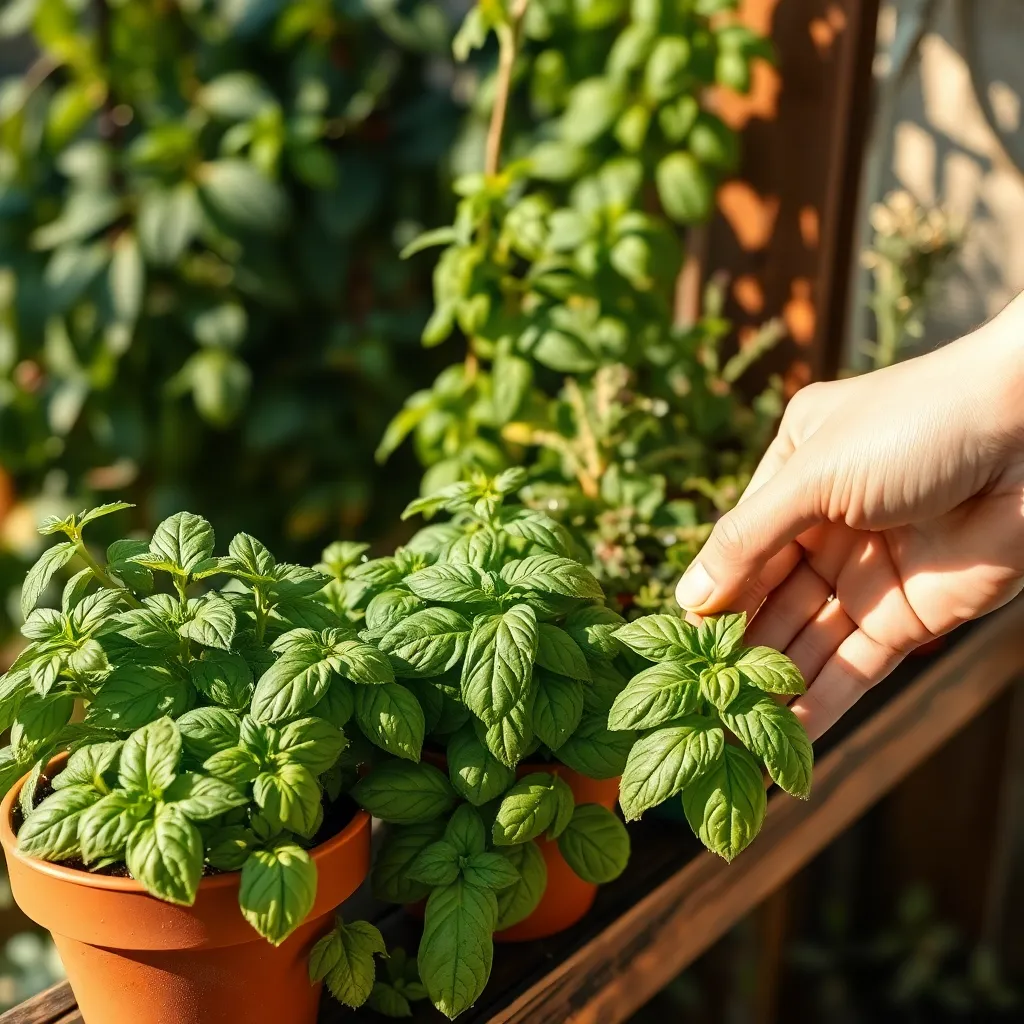
Regularly harvesting herbs is essential for encouraging new growth and maintaining healthy plants. Cutting back herbs like basil, mint, and parsley not only prevents them from becoming leggy but also stimulates fuller, bushier growth.
To harvest, use clean, sharp scissors and snip just above a leaf node or set of leaves. This practice helps the plant to focus its energy on producing more leaves rather than flowering, which is especially important for culinary use.
Beginner gardeners will find that herbs like mint and chives are especially forgiving and can be harvested frequently without harming the plant. For these robust herbs, remove about a third of the plant at a time to ensure continued growth.
Experienced gardeners can experiment with more delicate herbs, such as thyme and oregano, by selectively pruning to shape the plant and encourage air circulation. Consistent harvesting also helps prevent diseases and pests that thrive in crowded foliage.
After harvesting, water the plants thoroughly, especially in dry conditions, to help them recover and continue producing fresh growth. Consider adding a thin layer of organic mulch to retain moisture and keep roots cool, enhancing overall plant vitality.
- Harvest in the morning when essential oils are most concentrated for the best flavor.
- Remove flowers as soon as they appear to keep the plant producing leaves.
- Use harvested herbs fresh, or dry them for later use to maximize your garden’s yield.
Install a Simple Drip Irrigation
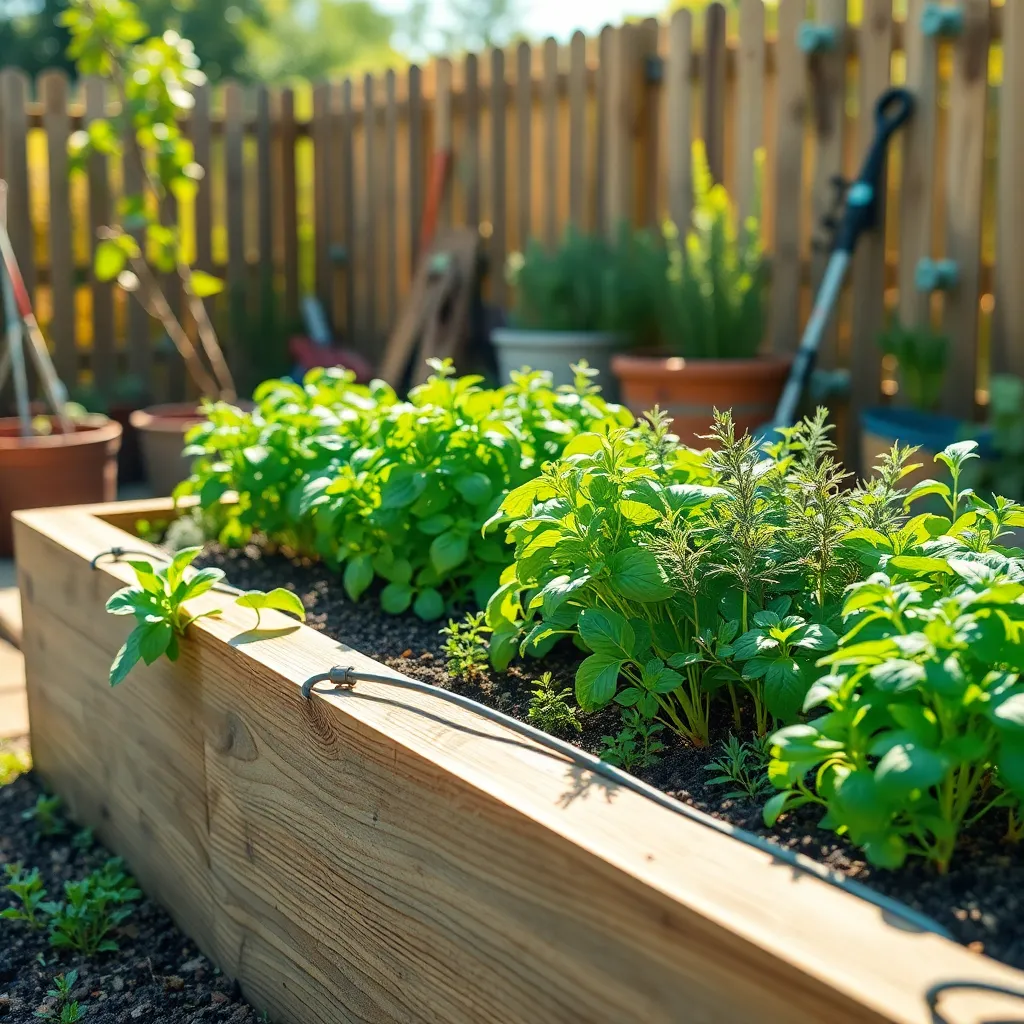
Installing a simple drip irrigation system can significantly ease the task of watering your herb garden. This method delivers water directly to the plant roots, ensuring efficient use of water and promoting healthier growth.
To begin, gather materials like a hose, emitters, connectors, and a timer. These items are readily available at most garden centers and can be purchased individually or as part of a kit.
Lay out the hose to fit the layout of your herb garden, ensuring it reaches all plants. Use connectors to attach emitters close to the base of each herb, allowing water to seep directly into the soil.
For optimal results, set a timer to water your herbs during the early morning or late evening. This timing reduces evaporation and ensures your plants have adequate moisture throughout the day.
Drip irrigation systems require minimal maintenance, making them ideal for busy gardeners. Periodically check emitters for clogs and adjust the system as your garden grows to continue supporting plant health.
Swap Herb Cuttings with Friends

Connecting with fellow gardeners to swap herb cuttings is a fantastic way to expand your collection without spending a dime. This practice not only helps you diversify your garden but also strengthens community ties among gardening enthusiasts.
When swapping herb cuttings, ensure that the plants are healthy and free from pests. It’s essential to use clean, sharp scissors or pruning shears to take cuttings, making a clean cut just below a leaf node to encourage root growth.
To give your cuttings the best chance of success, place them in water or a moist growing medium like perlite until roots form. Most herbs, such as basil, mint, and rosemary, root well in water, but harder stems like rosemary might benefit from a rooting hormone.
In addition to patience and care, maintaining proper conditions will help your cuttings thrive. Keep them in a warm, bright location, away from direct sunlight, and change the water every few days to prevent bacteria build-up.
Conclusion: Growing Success with These Plants
In exploring ’10 Budget-Friendly Herb Garden Ideas,’ we’ve discovered how nurturing a garden parallels cultivating a thriving relationship. The key concepts highlighted include patience, creativity, collaboration, adaptability, communication, shared goals, responsibility, compromise, appreciation for small joys, and sustainability. Each idea not only provides a cost-effective way to grow a beautiful herb garden but also offers insights into building a resilient and flourishing partnership.
As a next step, choose one concept to implement this week, whether it’s starting a small herb pot together or planning a garden project date. By taking this action, you’ll sow the seeds of teamwork and mutual satisfaction.
Remember, the journey to enriching your relationship is ongoing. Bookmark this article as a go-to resource whenever you need a fresh perspective or a gentle reminder of the simple, yet impactful, steps you can take. With consistent effort and attention, your relationship will not only grow but thrive, just like the most vibrant of gardens. Embrace this opportunity to cultivate love and happiness, ensuring your relationship blossoms beautifully over time.
